10 Most Popular Interior Design Styles Explained
There are many interior design styles with unique characteristics, finishes and flavors to inspire. To help you decide which one reflects you best, we've compiled a list of the ten most popular design styles and explained the elements of each one.
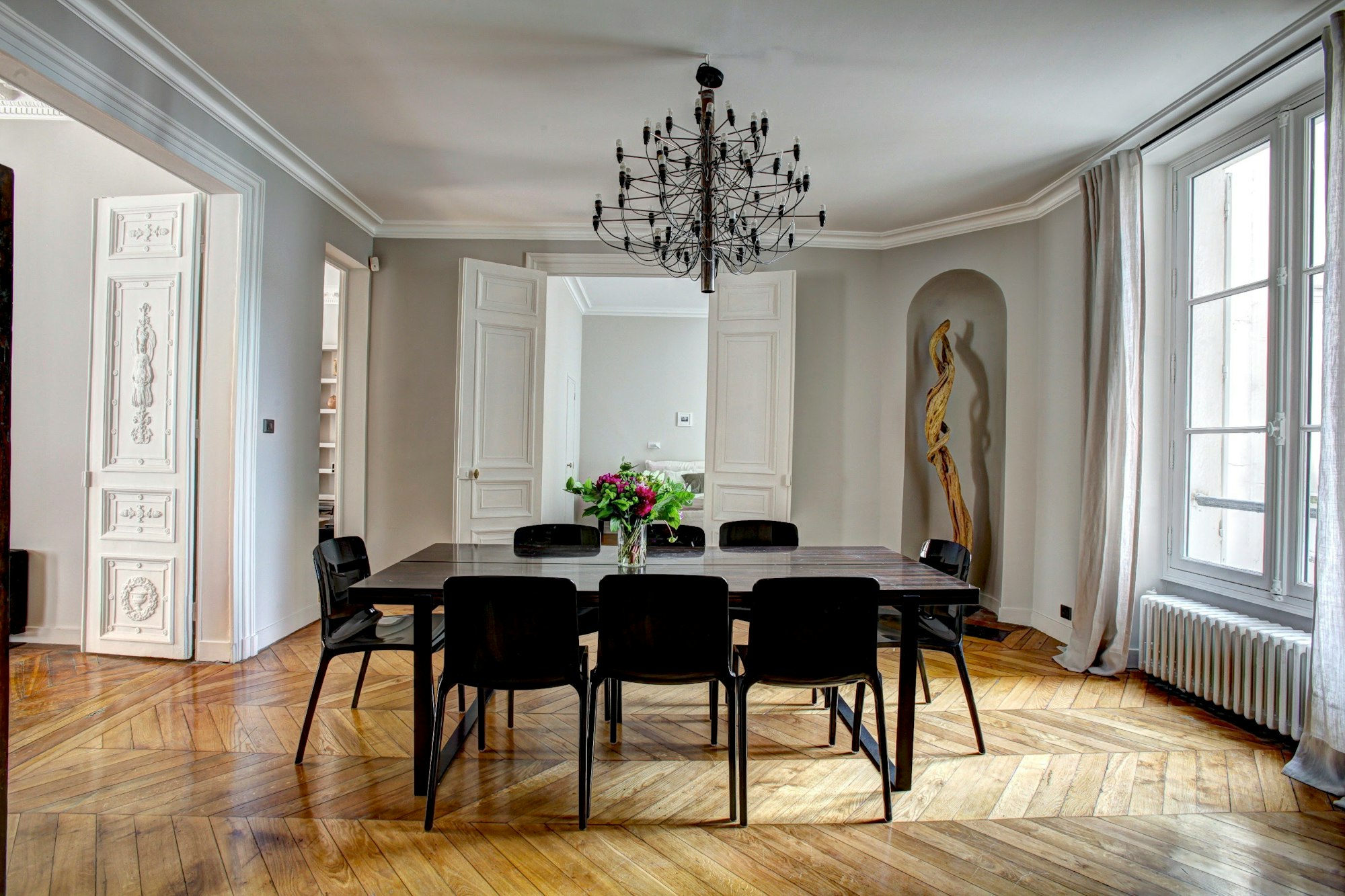
When decorating any space in your house, you want the finished project to reflect your style and personality. There are many interior design styles with unique characteristics, finishes and flavors to inspire. Terms like "contemporary," "industrial," or "Scandinavian" are just a few of the popular styles used by decorators today. To help you decide which one reflects you best, we've compiled a list of the ten most popular design styles and explained the elements of each one.
We recommend learning about the components of each style and how they differ from each other in our design school. You can always combine separate elements from different styles to create a unique look that speaks to you. Home décor magazines and social platforms like Pinterest are excellent sources of inspiration to help you get started.
What's in this post:
Contemporary
The contemporary design style is ever-evolving, but it is generally characterized by clean lines and minimalistic furniture. This style is perfect for those who want a modern look that is stylish and sophisticated.

Furniture in a contemporary home is elegant and practical, with a clean, defined structure and exposed legs. Light fixtures feature metallic elements that can be abstract in design, with a preference for one or two showpieces. This style also incorporates stainless steel, wood and large, dramatic plants in simple containers.
Contemporary design favors neutral color palettes that incorporate shades of white, neutrals like beige or grey and dark colors for contrast. To achieve this look, use smooth surfaces, natural materials and open spaces accentuated with large abstract works, wood paneling and well-crafted artisanal pieces.
Traditional
The traditional design is inspired by the classic style of the past. This style often features carved woodwork, ornate details and rich fabrics. Furniture and decor are usually costly and luxurious, making this style perfect for those who want a high-end look in their home.
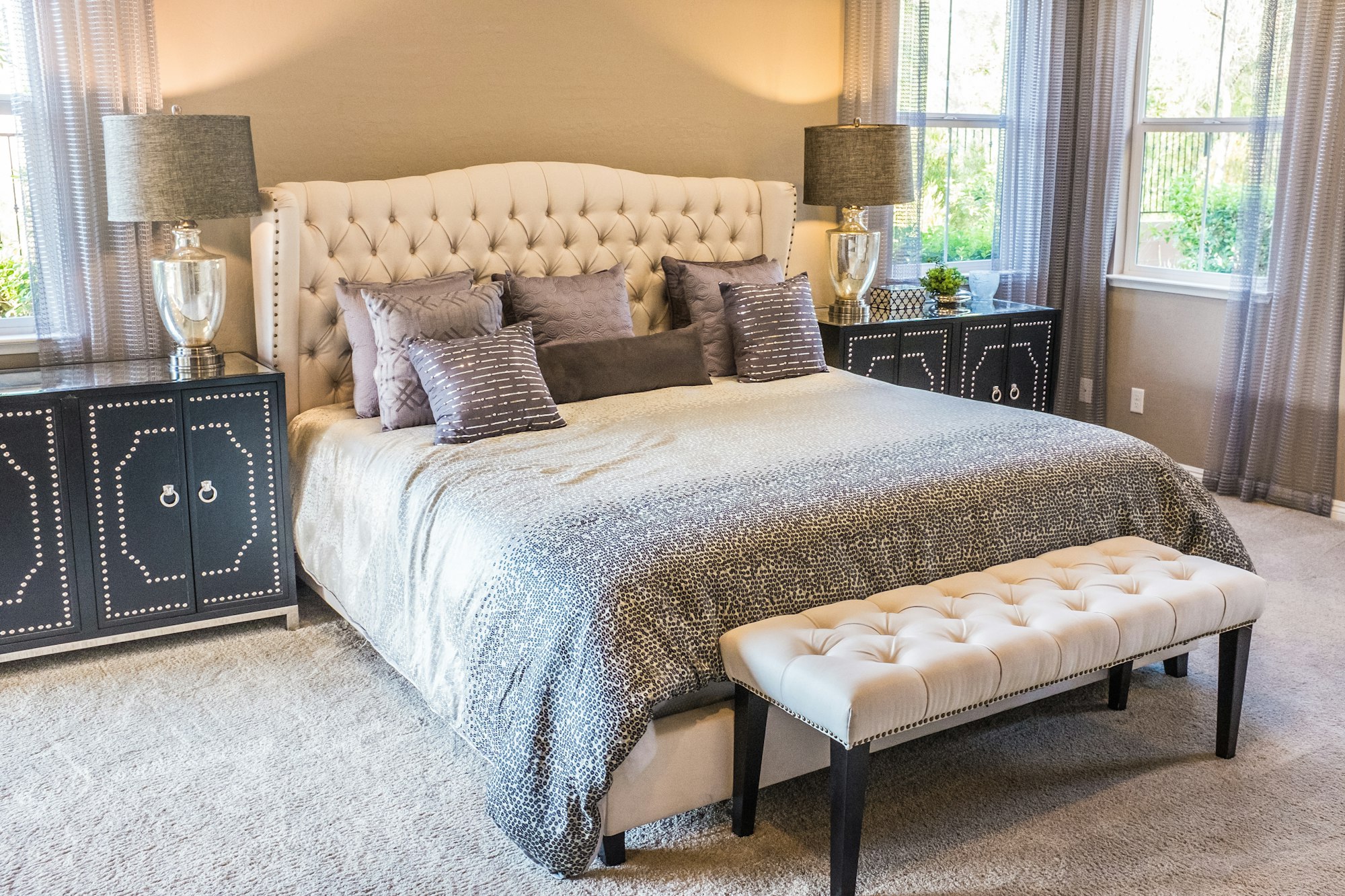
While inspired by more classical European design styles, traditional doesn't mean outdated. It brings comfort and familiarity that makes any space welcoming and warm. The furniture is elegant, heavy and upholstered, often using floral patterns and dark wooden finishes like maple, cherry or mahogany. Think claw-footed sofas, gold and silver accessories, crown moldings, valances and columns.
Symmetry is a common theme in the traditional style. Harmony, order and consistency feature prominently in room design, organized around a central feature like a fireplace. There is an element of predictability and comfort that make this a classic that never goes out of style.
Industrial
The industrial design style is characterized by exposed brick, pipes and concrete ceilings. Industrial elements can add an edgy feel to any room, making this style perfect for those who want a modern or trendy look. This look is often achieved by incorporating vintage or reclaimed pieces into the space.

Reminiscent of old industrial factories and warehouses, this look favors style and utility, emphasizing open spaces, natural color palettes, and a sense of rawness. This style appears commonly in warehouse conversions and lofts, but industrial design elements can be implemented in any house space. The open-concept layouts furnished with recycled and salvaged pieces, sparse functional furniture, metal light fixtures and large abstract artworks are the trademarks of this look.
Plants, bold accent colors and a blend of texture and materials can add a softer touch to this design. Cage lighting, bare Edison lightbulbs and large metal dome pendants are great options for lighting up industrial design spaces providing a modern take on factory lights.
Minimalist
Minimalist design is all about simplicity. This style often features neutral colors, clean lines and a lot of open space. Furniture is typically minimalist, with few decorations or accessories. If you're looking for a sleek and modern look, then a minimalist design is perfect for you.
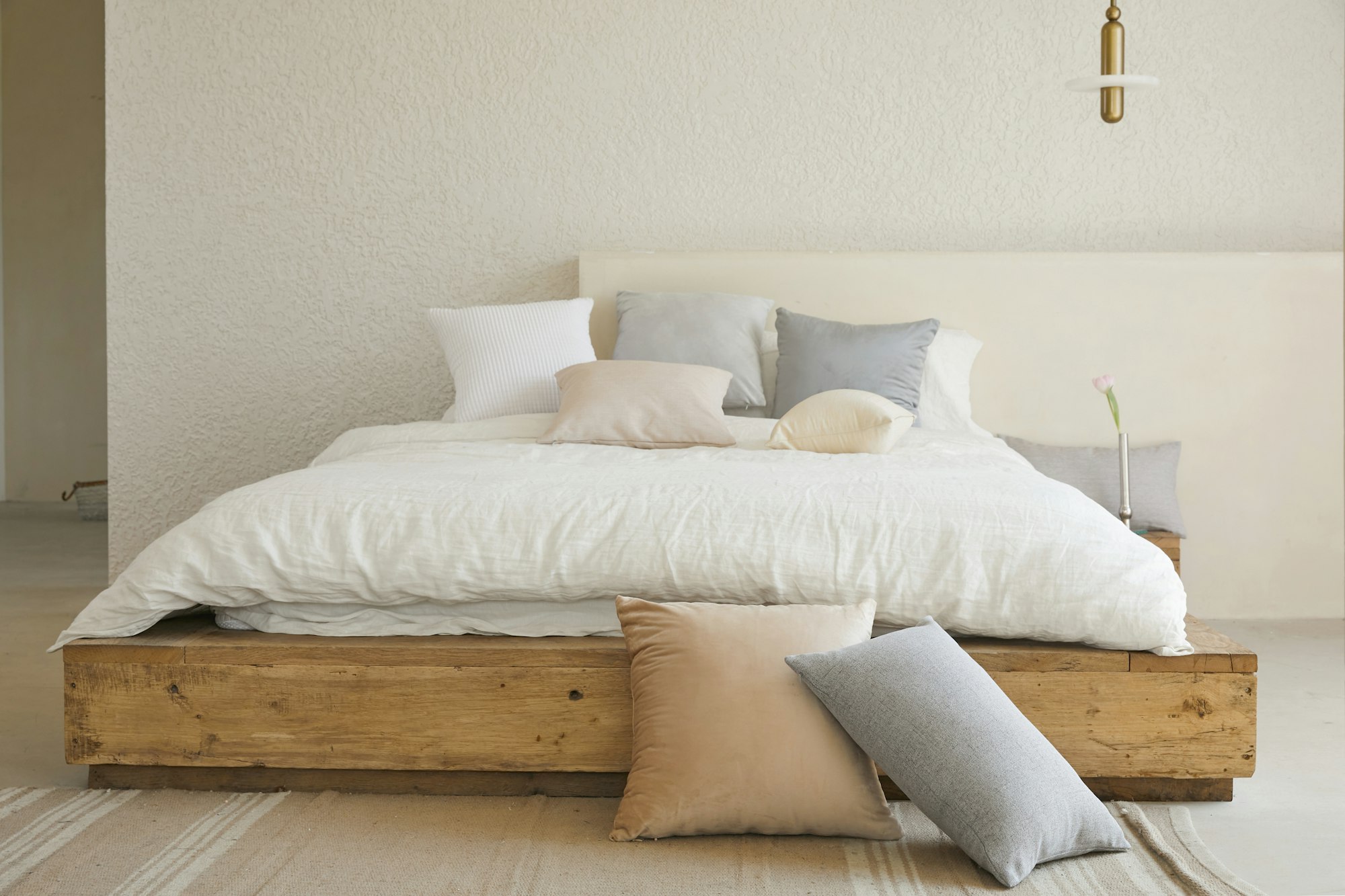
The Minimalist movement inspired this design in the 1960s and 70s and centered on efficiency above all else. Minimalist interiors are devoid of clutter, lack ornamentation and eliminate distractions to maximize the visual impact. With an emphasis on functionality and space, the furnishings often incorporate concealed storage spaces and use wood, marble, concrete and metal in design.
This stripped-down look with a basic aesthetic was designed to make spaces look larger and less busy. While the practical nature of this design might not work for everyone, many of the features can be incorporated into other styles that don't shun ornamentation.
Boho (Bohemian)
Bohemian design is all about creativity and self-expression. This style is often characterized by bright colors, eclectic furniture, and lots of patterns and textures. Bohemian spaces are typically very inviting and welcoming, making them perfect for those who want to create a warm and inviting space.
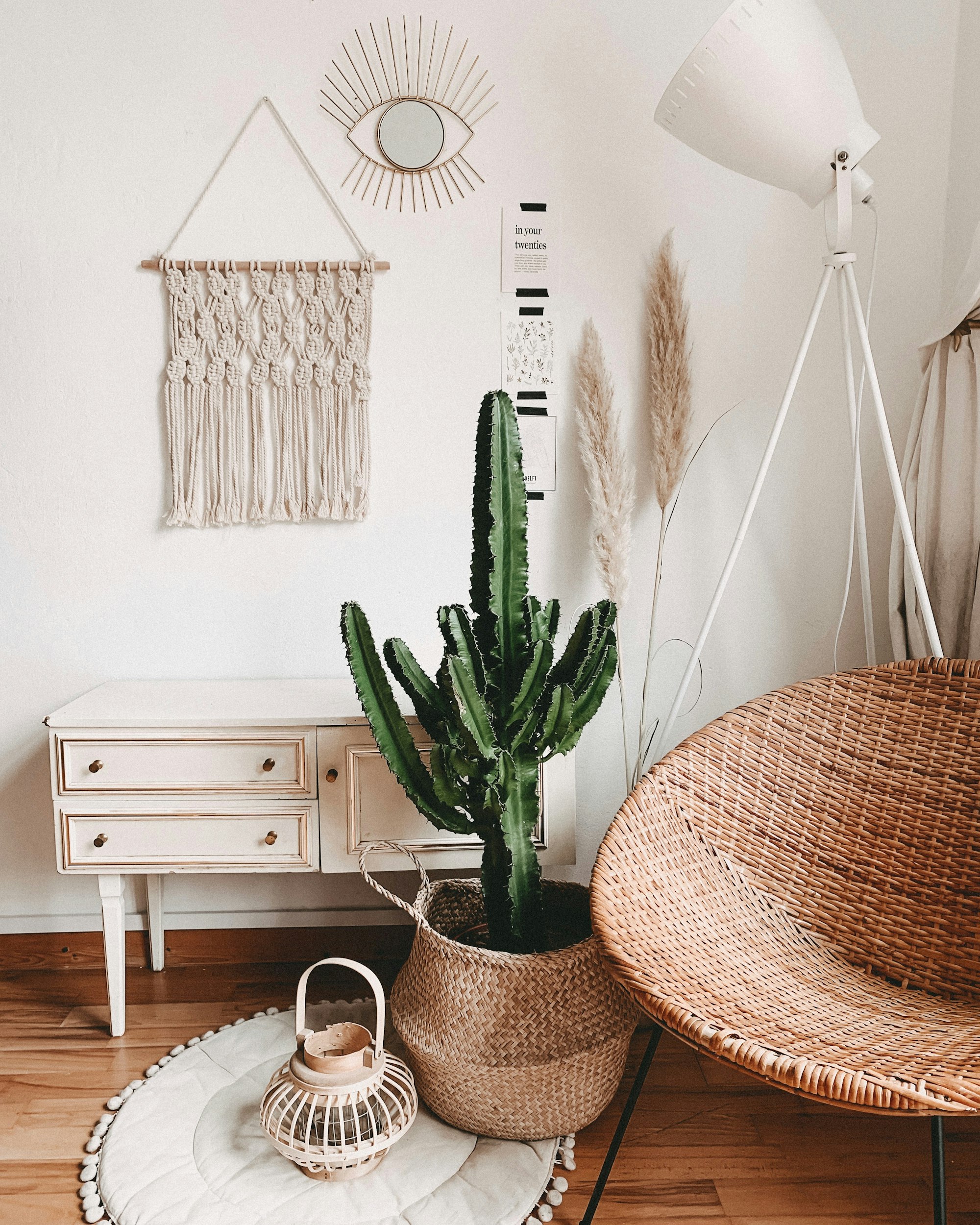
Bohemian interiors are eclectic by design, with lots of layering, jewel tones and vintage pieces. The emphasis here is on unique pieces and artworks. It's a fun and carefree style that incorporates plants, rugs, wicker furniture, macramé and flea market finds.
The Boho esthetic is about mismatched pieces, comfort and fun. Large floor cushions, hanging chairs, worn furniture, woven baskets, rattan and statement chandeliers bring this look to life. Ceramics, mismatched frames, wall weaves and artisanal crafts are commonly used to decorate these spaces.
Scandinavian
The Scandinavian design style is inspired by the minimalism of Nordic countries. This style is often characterized by light-colored wood, pale walls and lots of natural light. Furniture is typically simple and functional, with clean lines and minimalistic accessories. This style is perfect for those who want to create a calm and serene space.
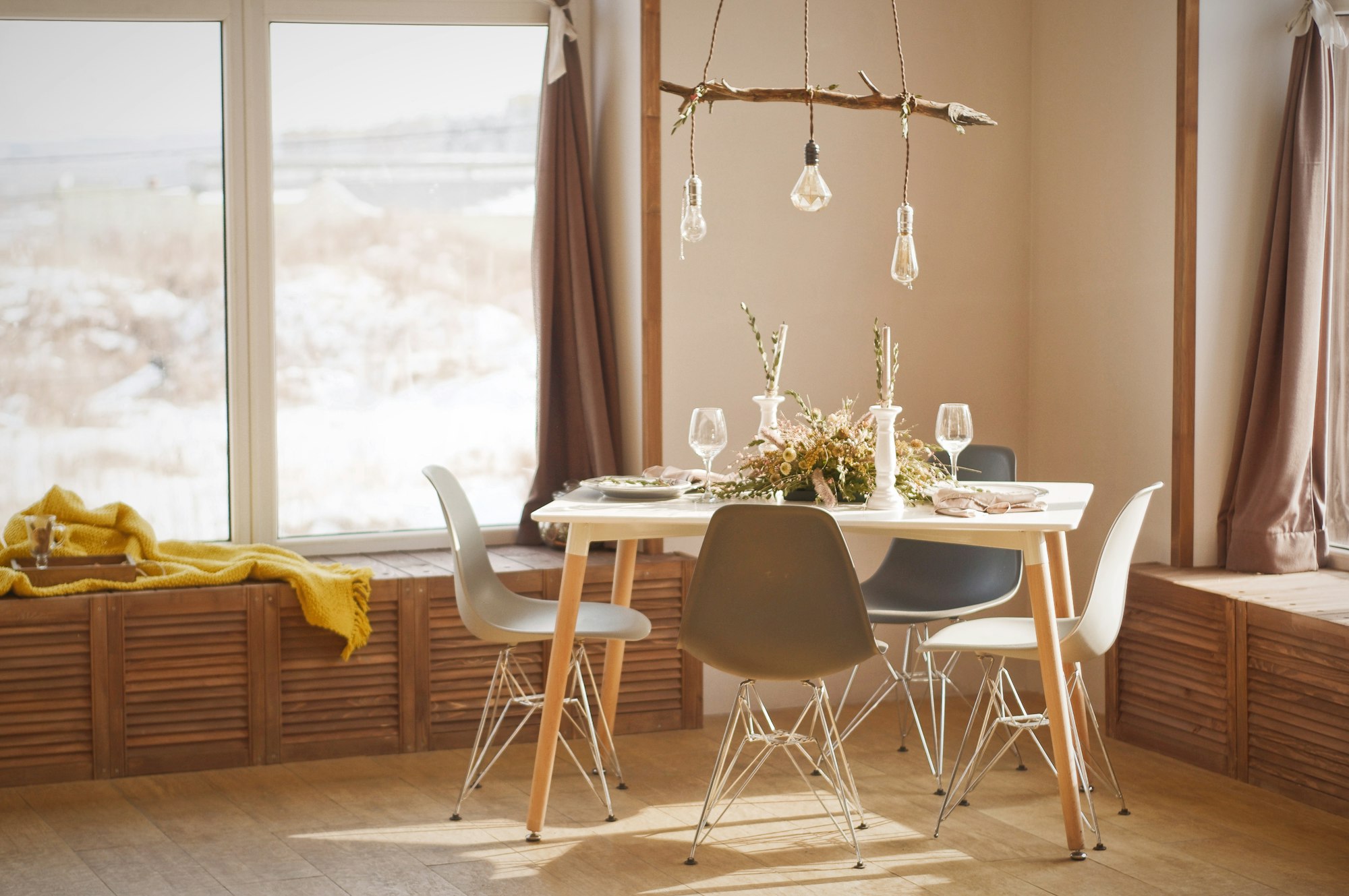
This design places a lot of emphasis on maximizing natural and artificial lighting. Big and unadorned windows play a crucial role in allowing as much light in as possible. Multiple sources of artificial light are used to create bright and clean spaces.
This style favors white, cream, beige and taupe colors with simple furniture to keep things airy and light. The Scandinavian design creates cozy and relaxing spaces that bring the outdoors inside using natural fabrics, plats and materials. Furniture and accent pieces tend to be easy to find and are affordable, making this style widely accessible to everyone.
Mid-Century Modern
Mid-century modern design is inspired by the architecture and furniture of the 1950s and 60s. This style often features simple lines, wood accents and pastel colors. Furniture is often eclectic and unique, making it an excellent choice for those who want to add a bit of personality to their space.
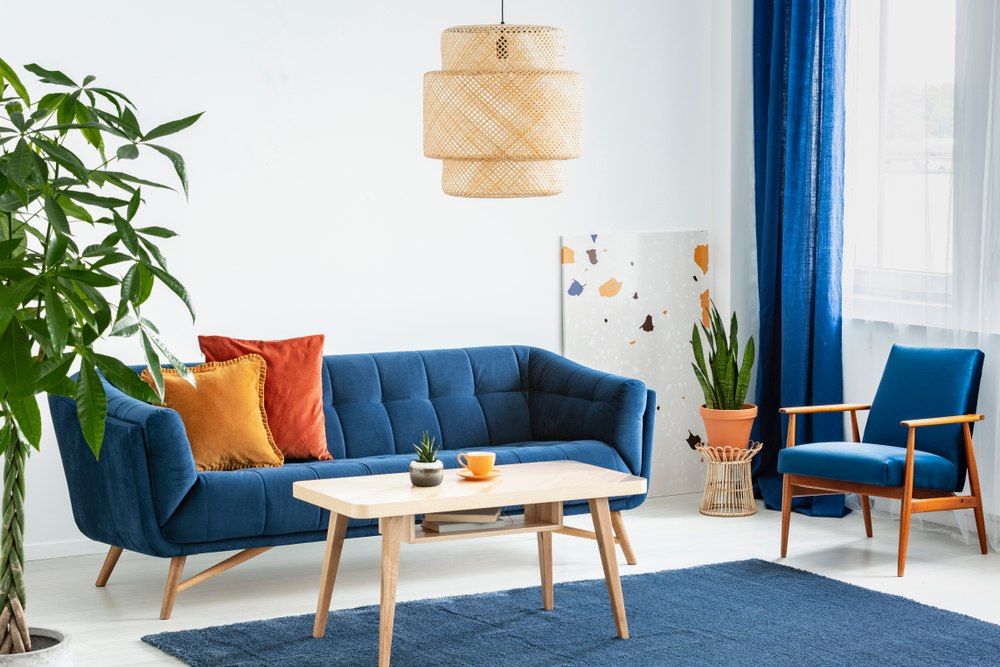
The post-war German Bauhaus movement inspired this design style. As resources were scarce, designers turned to newly manufactured materials for inspiration. Traditional designs were stripped to the basics and focused on functionality without embellishments. They used plastic, vinyl, plywood and wood veneer to create clean lines and simple shapes that could be mass-produced and affordable.
The look of mid-century modern design is tapered legs on rectangular sofas with straight backs that have clean and sleek straight lines. Hairpin legs on tables and chairs with geographical shapes and sculpture accents. This design favors bright reds, oranges, yellows, earthy browns and greens, which is an excellent option for people who love color in their space.
Glam/Hollywood Regency
The glamorous design style is all about luxury and opulence. This style is often characterized by shimmering fabrics, glittering details and lots of bling. Furniture is usually very elegant and expensive, making this style perfect for those who want to create a space that oozes sophistication.
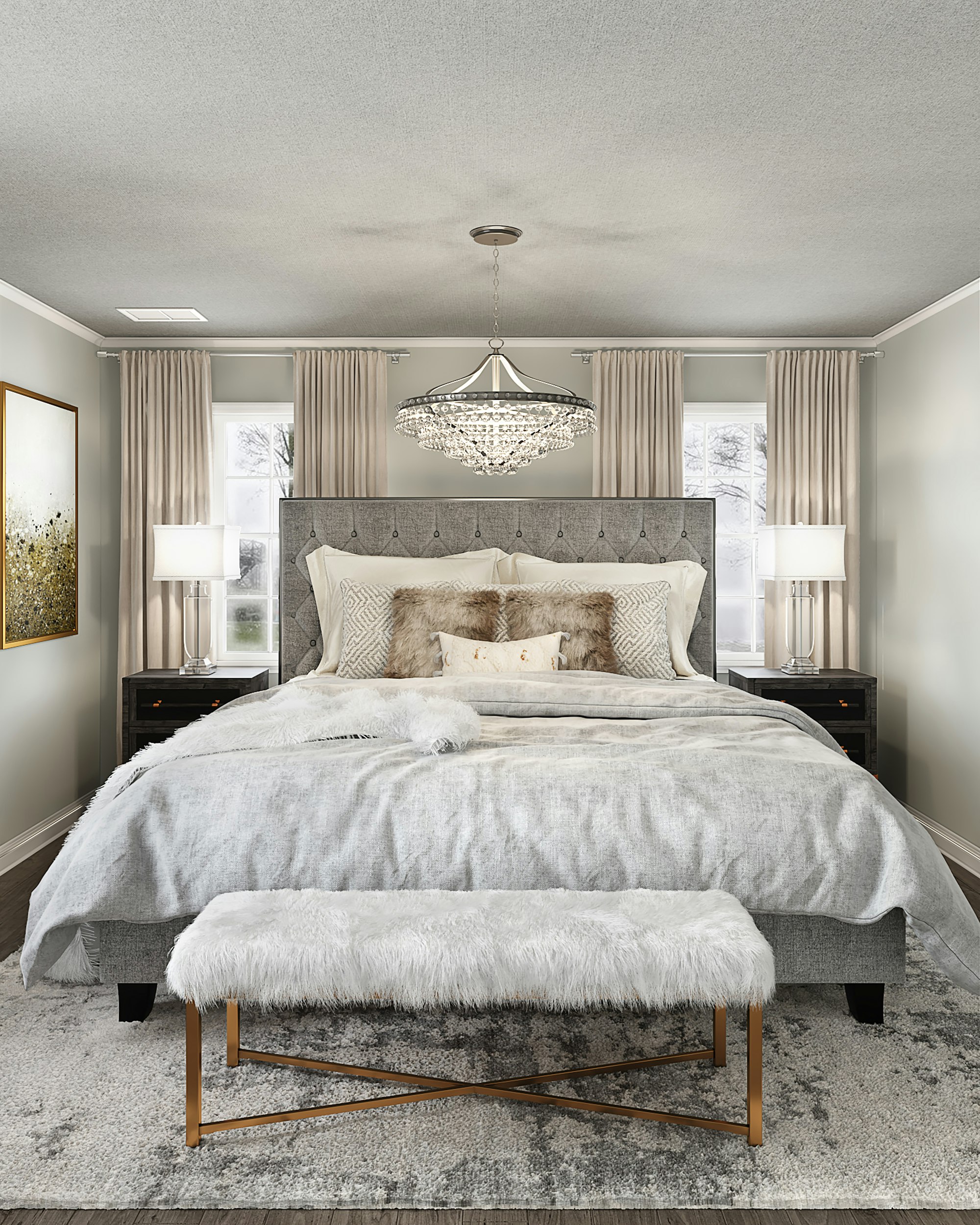
In glam, more is more. Influenced by the luxury of 1930s Hollywood, this style is the opposite of minimalism. There is lots of glitz and layering of luxurious fabrics. Faux fur, velvet and plush with dramatic and bold accents like gold, chrome and mirrors are staples of the glam design.
Glam is over the top, from fancy chandeliers to lacquered furniture and metallic finishes. Unlike other styles, the décor takes center stage here while the furniture is scaled and tailored to support the function of the space. This style's main objective is to maximize the accents, and the bolder, the better.
Art Deco
The Art Deco design style is inspired by the glamour of the 1920s and 1930s. This style often features opulent details, shimmering fabrics and geometric shapes. Furniture and decorations are usually very expensive and luxurious, making this style perfect for those who want to create a space that oozes sophistication.
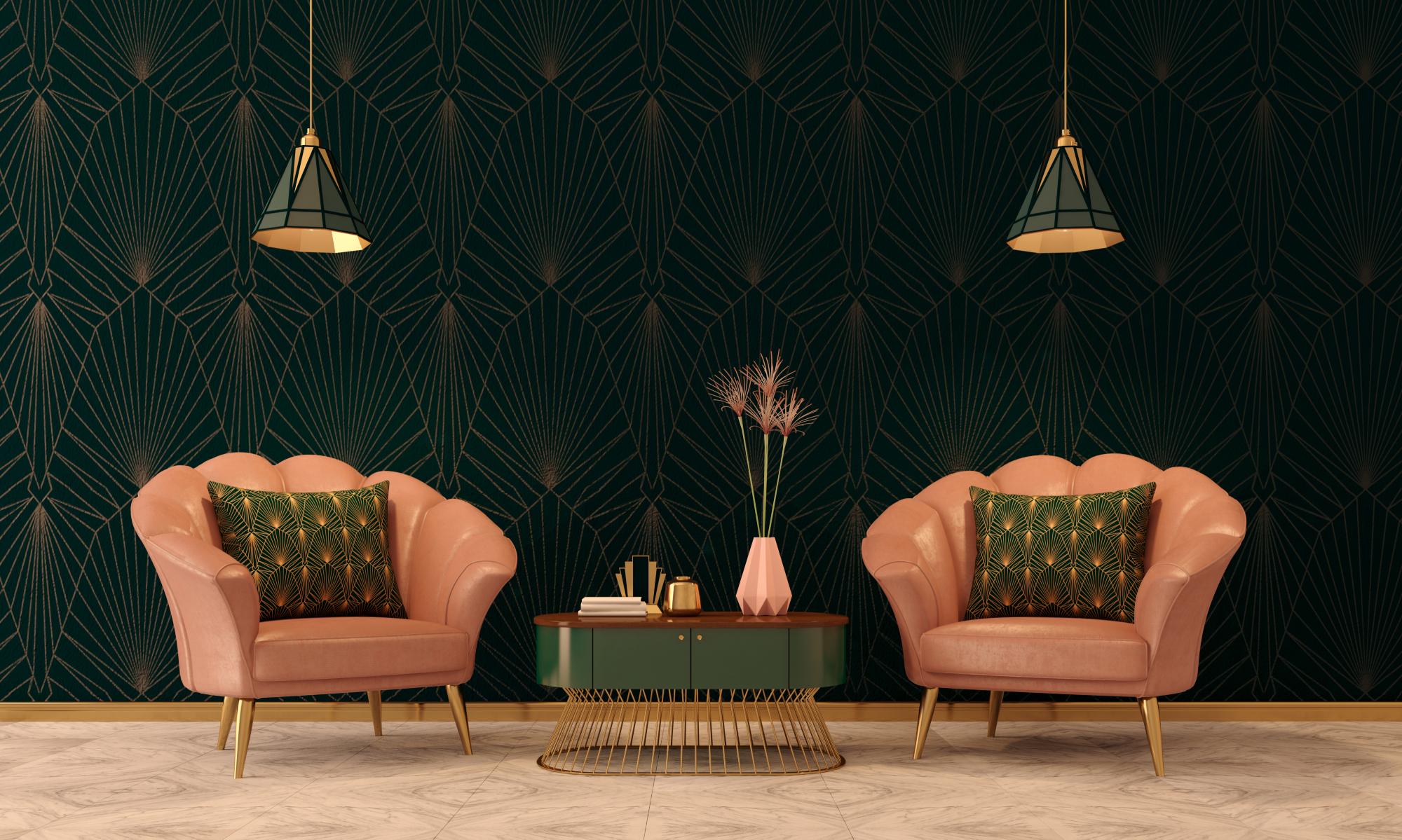
The Cubism movement inspired Art Deco, and there is a strong focus on angled patterns mixed in with graceful curves. This style incorporates circles, squares and mosaics with velvet, brass, gold, natural stones and jeweled tones to create dramatic spaces. Bold and saturated colors like emerald, ruby and sapphire work well in this esthetic.
This style is never dull, but consider incorporating some aspects of this design and pairing them with other styles if it feels a little too much. A combination of black and white elements can add a dramatic contrast favored by this style while making it more compatible with others.
Modern Farmhouse
The modern farmhouse design style combines the rustic elements of a farmhouse with the sleek lines and simplicity of contemporary design. This style often features wooden floors, white walls and exposed beams. Furniture is typically functional and straightforward, with an industrial or country feel. If you want to add a touch of nature to your space, then a modern farmhouse design is perfect for you.
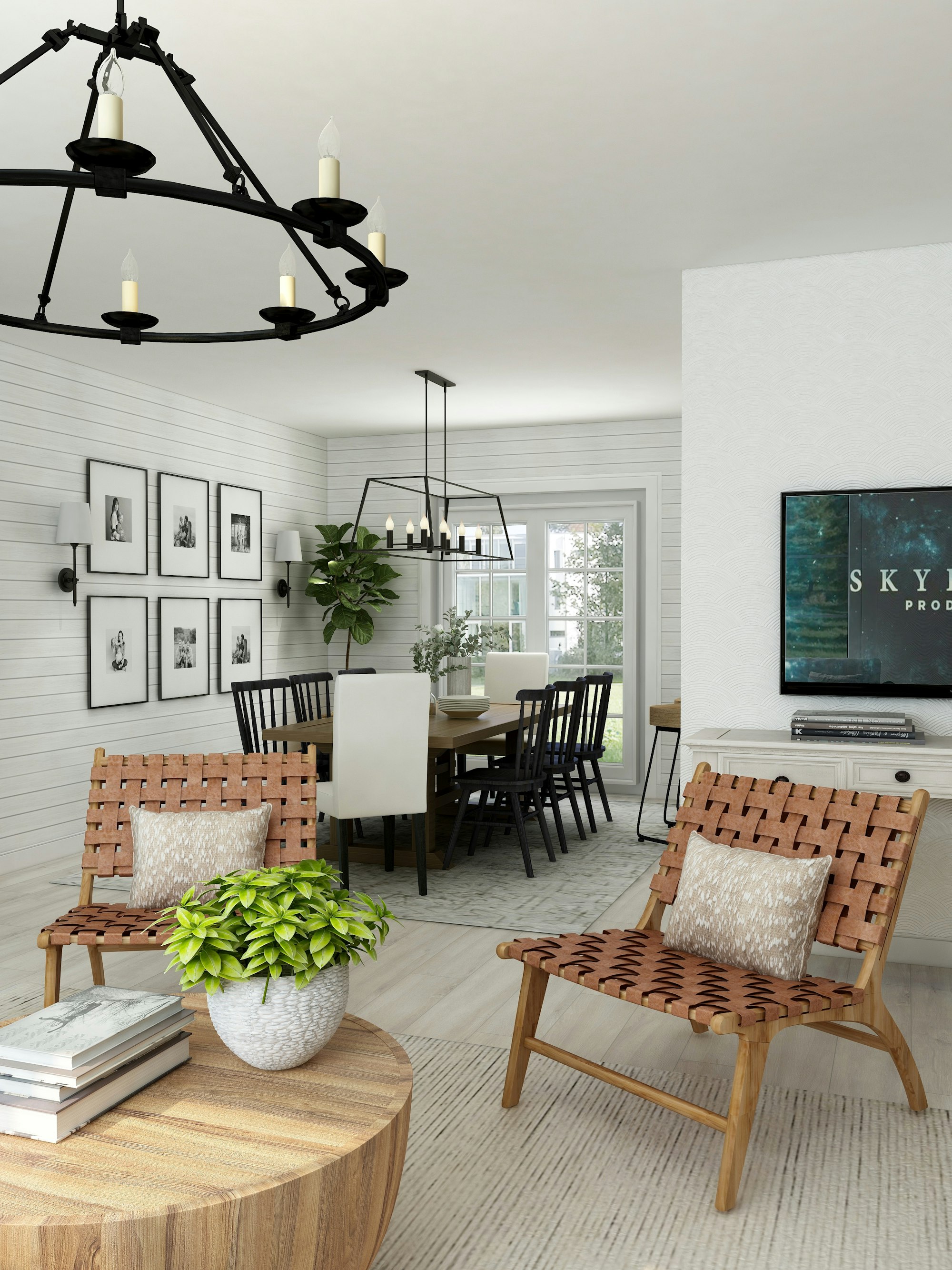
Typical elements of a modern farmhouse include barnyard doors, overstuffed sofas, galvanized pendants, wrought iron fixtures, butcher blocks and salvaged-wood furnishings. Vintage signs, word art and oversized clocks are often used with shiplap or barnboard accent walls.
Mismatched furniture, minimalistic interiors and quality craftsmanship are the essential elements of this rustic-style interior that's laid back yet sophisticated. The modern farmhouse look was popularized by Joanna Gaines, the star of the popular home improvement show Fixer Upper, who rehabs and decorates homes with her husband.
Conclusion
Understanding the elements of different design styles is a great way to help you find one that works best for you. As you build your aesthetic, don't be afraid to mix elements of different designs to create your style. Want to try something fun? Read our post on Best Interior Design Styles Based on Your Personality.
We hope our list has given you valuable insights into popular decorating styles that will help you get started. You can also try our SmartWizard feature to create fully-furnished floor plans in minutes. With SmartWizard, you can choose different design styles to see how your room will look and swap them out for different ones with a few clicks. It's that easy.
